Never Talk with Strangers
Epigraph
«... who are you, then?»
«I am part of that power
which eternally wills evil
and eternally works good.»
The epigraph comes from the scene entitled Faust's Study in the first part of the drama Faust, written by Johann Wolfgang von Goethe (1749-1842). The question is asked by Faust; the answer comes from the demon Mephistopheles.
Never Talk with Strangers
The title is an ironical reference to the psychology of many Muscovites in a period in which there existed an obsession for espionage. In his speech to the joint plenum of the Central Committee and the Central Control Commission of the Communist Party on January 11, 1933, General Secretary Joseph Stalin (1878-1953) had warned that «the former» (the supporters of the previous regime) were scattered around the country and they only wanted to bring «mischief and harm». Talking to them was dangerous and those who did, would be pursued by the Soviet secret police on suspicion of espionage. Foreigners belonged to «the breed of the unknown and the strangers», to whom you should not talk.
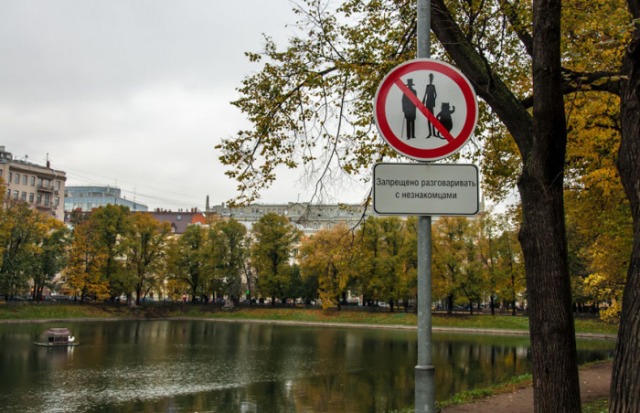
Never Talk with Strangers (Patriarch's Ponds)
Foreigners who visited the Soviet Union were closely monitored by the secret service НКВД [NKVD], the Народный комиссариат внутренних дел [Narodnyy Komissariat Vnutrennikh Del] or People's Commissariat for Internal Affairs, which had informers and infiltrators at work everywhere. Later, during the Cold War between the Soviet Union and the West, this service was known as the notorious КГБ [KGB], the Комитет государственной безопасности [Komitet gosudarstvennoy bezopasnosti] or Committee for State Security. Now it is called ФСБ [FSB], the Федеральная служба безопасности Российской Федерации [Federalnaya sluzhba bezopasnosti Rossiyskoy Federatsii] or Federal Security Service of the Russian Federation.
In The Master and Margarita, Bulgakov never mentions the NKVD by name. However, the service is ubiquitous in the novel, but is indicated by the impersonal «one» or «them», or referred to as «a certain organisation».
You can read more on the issue of Russians and foreigners in the section Social and Cultural Context of this website by clicking the arrow below.
Patriarch's Ponds
The Patriarch's Ponds are situated in a park very close to Bulgakov's former residence in the Большая Садовая улица [Bolshaya Sadovaya uliitsa] or Big Garden Street in Moscow. The Russian name of this place is Патриаршие пруды [Patriarshie Prudy] or Patriarch's Ponds. The name is in plural, though there is actually only one pond. A more detailed description of Patriarch's Ponds can be found in the Locations section of this website.
Many streets, squares and buildings got a new name in the Soviet era. In Bulgakov's time, the Patriarch's Ponds were called Пионерские пруды [Pionerskie Prudy] or Pioneer's Ponds. In The Master and Margarita however, Bulgakov consequently used the prerevolutionary names, which often were of christian orthodox origin.
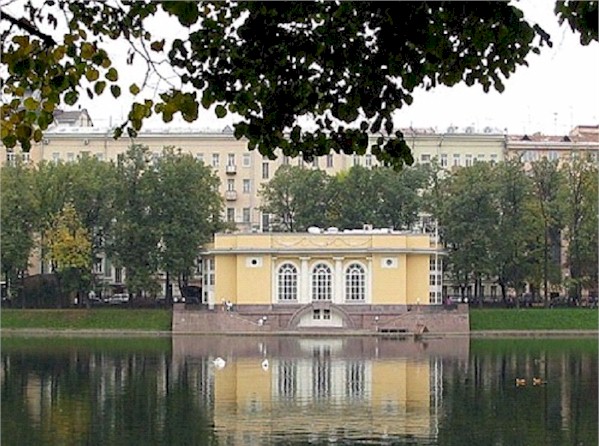
Patriarch's Ponds in Moscow
You can read more on the Patriarch's Ponds in the section Locations of this website by clicking the arrow below.
A grey summer suit and a respectable fedora
The first of the two citizens at Patriarch's Ponds looks like a functionary. With the description of «black horn-rimmed glasses of a supernatural size» Bulgakov gives an indication of his appreciation of such characters.
As far as the hat is concerned, Bulgakov described a приличную шляпу пирожком [prilichnuyu shlyapu pirozhkom]. A literal translation would be: a respectable hat as a pastry, but the translation is correct, since шляпа пирожком [shlyapa pirozhkom] was the popular name given to a Федора [fedora].
A fedora is a felt hat, often made from Belgian rabbit fur, with a wide brim and indented crown, typically creased lengthwise down the crown and pinched near the front on both sides.
The name of the hat comes from Fédora Romazov, a character from the play Fédora by the French writer Victorien Sardou (1831-1908). She was wearing a fedora, and the fact that this character was played in the first representations of the play in 1889 by the world-famous actress Sarah Bernhardt (1844-1923) made this hat popular all over the world. First worn by women, the fedora later became a popular men's attribute after Edward VIII (1894-1972), the then Prince of Wales, started wearing it in 1924. Well-known variants later were produced by the fashion houses Borsalino and Stilton.
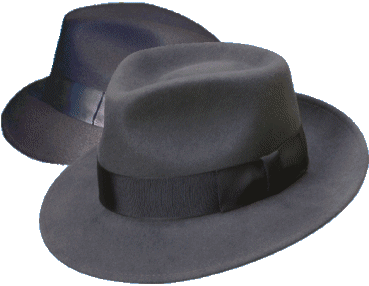
Fedora hats
After the revolution, hats were no longer used in the Soviet Union, unless by old-fashioned intellectuals. Hats were winning acceptance again in the 30's, namely among the new elite.
Georgy Andreevsky (°1940), who worked for years for the Attorney General of the USSR, published a series of books entitled The daily life in Moscow during the Stalin era. He quoted a French journalist which name he spelled in Cyrillic as Морис Родэ-Сэн [Maurice Red-Sen], but on whom I haven’t found any further information. In 1934, this journalist wrote the following in the emigrants’ journal Иллюстрированная Россия [Illyustrirovannaya Rossiya] or Russia Illustrated: «It is shocking to see how the people are dressed in Moscow. Shoes are a rarity. Some passers-by, however, differ greatly from the mass. They are better dressed and they all carry, without any exception, a bag. These are the officials, the rulers of the Soviet society. Shoes, bags and hats, that’s how you can recognize the Soviet caste».
Bulgakov himself was always dressed very decently when he was in company. He not only often carried a fedora hat, but also a pince-nez.
A checkered cap, a cowboy shirt and black sneakers
The second character complies with the stereotype image of the proletarian poet looking far less bourgeois. He was в ковбойке [v kovboyke], or in a checkered shirt. The word ковбойкa [kovboyka] is derived from the American word ковбой [kovboy] or cowboy.
Mikhail Aleksandrovich Berlioz
This absolutely non-Russian name for the chairman of the board of Massolit is referring to the French composer Louis Hector Berlioz (1803-1869) who wrote the opera La damnation de Faust. In this opera there are four characters: Faust (tenor), the devil Méphistophélès (bariton), Marguerite (mezzosoprano) and Brander (bas).
Hector Berlioz wrote also the well-known Symphonie Fantastique (1830), one of the most famous examples of programme music. In the fourth movement of this symphony, the Marche au supplice or March to the scaffold, the main character is seeing his own decapitation in his dream, and in the fifth movement, the Songe d'une nuit du sabbat or Dream of a witches' sabbath, he sees himself at a witches' sabbath in a giant orgy. Both themes will be important later in the novel.
For the lovers of trivia: composer Hector Berlioz studied, like Bulgakov, medicine before he focussed totally on art.
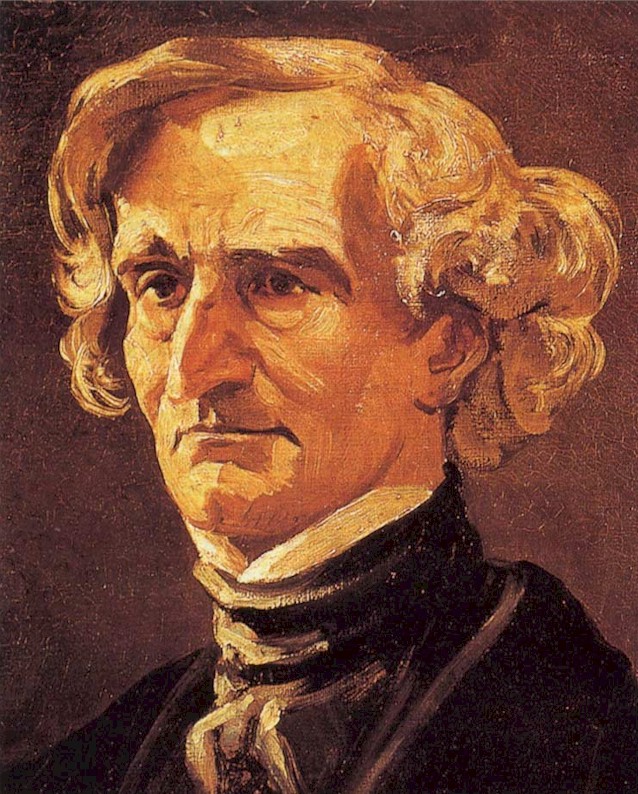
Composer Hector Berlioz
A more detailed description of Mikhail Aleksandrovich Berlioz can be found in the Characters section of this website by clicking the arrow below.
Massolit
Massolit is an invented but plausible contraction parodying the many contractions introduced in post-revolutionary Russia. There will be others further on in the novel - like the Dramlit House (House for Dramatists and Literary Workers), findirector (financial director), and so on.
In Bulgakov’s time, writers needed to be members of official literary unions if they wanted to publish their works. Some examples of such unions were the Российская Ассоциация Пролетарских Писателей (РАПП) [Rossiyskaya Assotsiatsiya Proletarskikh Pisateley (RAPP)] or Russian Association of Proletarian Writers and the Московская Ассоциация Пролетарских Писателей (MAPP) [Moskovskaya Assotsiatsiya Proletarskikh Pisateley (MAPP)] or Moscow Association of Proletarian Writers. The names of these organisations are real: many hideous abbreviations were commonly used in the Soviet Union.
Bulgakov based the fictional Massolit on the RAPP and the MAPP. In the book he gives no explanation to the abbrevation. But it probably was the Мастера Социалистической литературы [Mastera Sotsialisticheskoy literatyry] or Masters for Socialist Literature, by analogy with the Мастера Коммунистической Драмы (Масткомдрам) [Mastera Kommunisticheskoy Dramy (Mastkomdram)] or Masters for Communist Drama, an organisation that really existed in Bulgakov's era. Mastkomdram was created on November 29, 1920 as an initiative of the TEO, the Theatre Division of the Commissariat of Education and Enlightenment, and lead by theatre director and actor Vsevolod Emilevich Meyerhold (1874-1940).
According to the Russian Bulgakov expert Boris Vadimovich Sokolov (°1957), the author of the Bulgakov Encyclopedia, the name Массолит [Massolit] would be an abbreviation of Масонские литературы [Masonskie literaturi] or Masonic writers. Sokolov argues his thesis by referring to an article written by Afanasy Ivanovich Bulgakov (1859-1907), theologian and church historian, and father of Mikhail Afanasievich. In 1903, he had written an article about Modern Freemasonry in its Relationship with the Church and the State, which was published in the Acts of the Theological Academy of Kyiv. Bulgakov Senior wrote that the Masons wanted to introduce a new faith. A false faith, according to him, because their only aspiration would have been to increase the personal wealth of the members. However, it seems somewhat farfetched to link the name Massolit to Freemasonry. In that case, Bulgakov would have written Масолит [Masolit], with only one «s», which not.
Bulgakov was interested in the symbols of Freemasonry, however, and he refers to them indeed on various places in the novel.
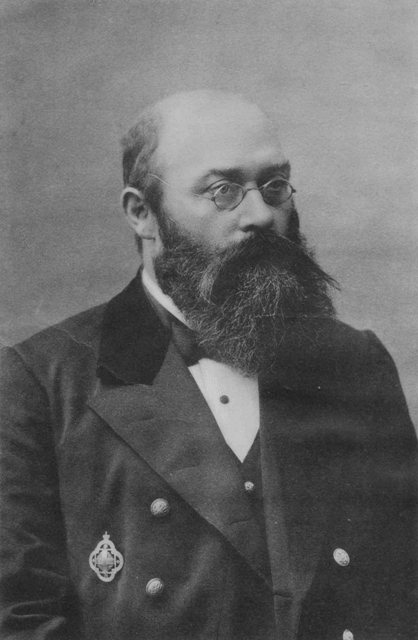
Afanasy Ivanovich Bulgakov
You can read more on Freemasonry in The Master and Margarita in the Context section of this website by clicking the arrow below.
Ivan Nikolaevich Ponyryov (Bezdomny)
Бездомный [Bezdomny], the nickname of the poet Ivan Nikolaevich Ponyryov, means The Homeless in Russian.
In the early versions of the novel the young poet was called Безродный [Bezrodny], which means The Lonely. Many so-called proletarian writers used such pseudonyms. The most famous one is probably Aleksey Maximovich Peshkov (1868-1936) who called himself Maxim Gorky. Горький [Gorky] means The Bitter. Other examples of such pseudonyms are Голодны [Golodny], The Hungry, Беспощадный [Besposhchadny], The Wreckless or Приблудный [Pribludny], The Lost.
The pseudonym Bezdomny reminds of Demyan Bedny (1883-1945). Бедный [Bedny] means The Poor. His real name was Efim Alexandrovich Pridvorov. Pridvorov wrote anti-religious works in the '20's, like, for example The New Testament without Shortcomings of the Evangelist Demyan. In 1925, Bulgakov made an annotation in his diaries which later were found in the KGB-archives: «He presents Jesus Christs as a cheat and a swindler... there are no words for such crime». It is possible that Bulgakov got the idea of writing The Master and Margarita after having read Bedny's work.
Homeless also reminds of Alexander Ilych Bezymensky (1898-1973). Безыменский [Bezymensky] means The Nameless. He was a proletarian poet who had written a theatre play that partly was a parody of Bulgakov's own play Days of the Turbins.
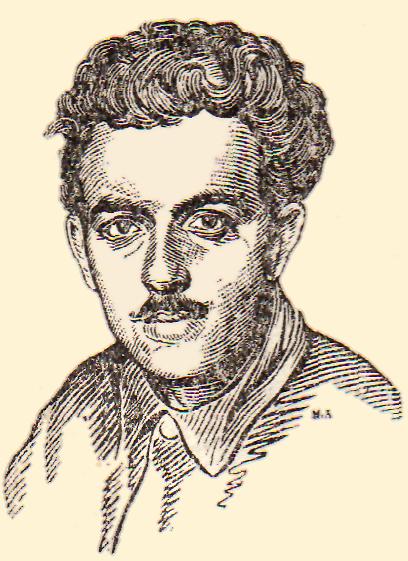
Alexander Ilich Bezymensky
A more detailed description of Ivan Nikolayich Ponyryov (Bezdomny) can be found in the Characters section of this website by clicking the arrow below.
Seltzer and beer
Bulgakov didn't really need to exaggerate to make this conversation look like a parody - this kind of dialogues could be heard daily in the former Soviet Union. Both the situation of supply shortage and the description of the protagonists' attitudes towards it were common practice. Only in a берёзка [beryozka] or foreign-currency-only store there was no supply shortage.
You can read more on foreign currency stores in the Context section of this website by clicking the arrow below.
In the original Russian text Bulgakov didn’t write about ordinary seltzer. He uses the word нарзан [narzan]. Since 1894, the Narzan mineral water is bottled in Kislovodsk, a city in the region of Stavropol in the North Caucasus. Bulgakov writes narzan, without capital, because the water was so popular that the brand name became a generic name.
Kislovodsk
Literally Kislovodsk means acid waters. It was a popular resort in the northern Caucasus, famous for its mineral springs. The Narzan mineral water is bottled here. For Russians with connections «the South» with the Caucasus, the Crimea and the Black Sea was the most prestigious resort.

Kislovodsk
After the creation of the Союз советских писателей [Soyuz Sovietskikh Pisateley] or Union of Soviet Writers in 1932, writers in the Soviet Union could be rewarded with a путёвка [putyovka] for Kislovodsk. A putyovka is a (doctor's) referral letter which Soviet citizens needed for going to a sanatorium. A sojourn in a sanatorium was - and still is in many cases - a combination of a recreational stay at the sea coast with a programme of courses of treatment and physical exercices, prescribed and followed by doctors.
A transparent citizen […] wove himself out of it
In the period that Bulgakov wrote The Master and Margarita, he got almost nothing published. This was perhaps the reason why he resumed themes or situations he had described earlier, which had no or only a limited audience. The transparent citizen who appears here for Berlioz, resembles a theme that was already in the serial Столица в блокноте [Stolitsa v bloknotye] or The Capital on a Blocnote, published in the journal Nakanune in December 1922 and February 1923: «... behind the young man wove himself out of the air, with no signal from his part (Bolshevik tricks!), a policeman».
A long anti-religious poem
Antireligious demonstrations of every sort and kind were extremely spread in that epoch, such as the iconoclastic poetries of Demyan Bedny (1883-1945), pseudonym of Efim Aleksandrovich Pridvorov. Bulgakov recalled with indignationce that he considers it to be a cursing. It is possible that the original drawing of the novel was born as a reaction against this rude propaganda.
Berlioz ordered a poem on the occasion of the holiday of Easter with the concrete purpose of propaganda. This was not unusual. In the Soviet Union it was common practice to publish atheistic literary works on the eve of christian and other holidays.
You can read more about atheism and propaganda in the Soviet Union in the Context section of this website by clicking the arrow below.
The most ordinary mythology
The statement that Jesus as a person is a myth comes from the theory of Bruno Bauer (1809-1882), a German theologian, philosopher and historian and a follower of Georg Wilhelm Friedrich Hegel (1770-1831) who once awarded the young Bauer an academic prize for a philosophical essay criticizing Immanuel Kant (1724-1804). Kant had made quite some efforts to prove the existance of God. Bauer was also engaged in furious polemics with others who, as he did himself, tried to prove that the historical Jesus never existed, like David Strauss (1808-1874).
Philo of Alexandria
Philo of Alexandria (20 BC-54) was a Greek philosopher of Jewish origin, a biblical exegete and a theologian. He influenced both the Neo-Platonists and early Christian thinkers.
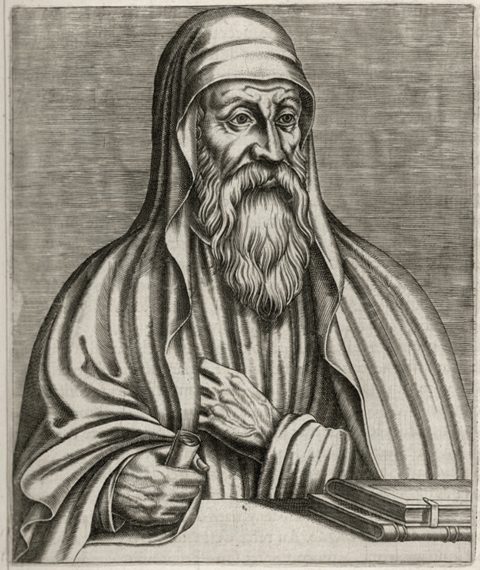
Philo of Alexandria
Flavius Josephus
Flavius Josephus (57-100) was a Jewish general and historian, born in Jerusalem, he's the author of The Jewish War and Antiquities of the Jews. Incidentally, Berlioz is mistaken when he says that «the brilliantly educated Flavius never said a word about the existence of Jesus», because Christ is indeed mentioned in the latter work.
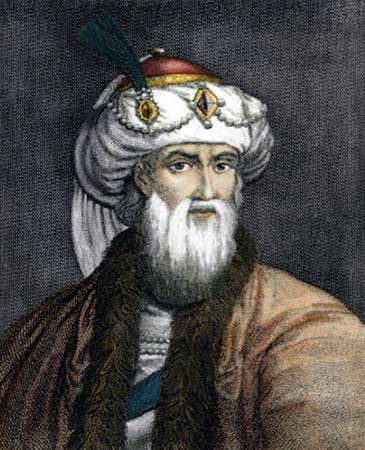
Flavius Josephus
Tacitus's [famous] Annals
Annals is a work on the history of the Roman Empire during the first century by the Roman historian Cornelius Tacitus (55-120), covering the years 14 to 66. He also wrote the book History, which covered the years 69-70, The Annals are not completely saved, except for the years 14-37 (the reign of Emperor Tiberius) and 47-66 (Claudius and Nero). Tacitus referred in one page to Jesus Christ, his execution by Pontius Pilate and the existence of early Christians in Rome.
Modern scholarship rejects the opinion that the passage Berlioz refers to is «a later spurious interpolation». However, in The Prospect of a Christian Interpolation in Tacitus, Annals 15.44, an article published in 2014, the American atheist activist and blogger Richard Cevantis Carrier (°1969), a leading proponent of the Christ myth theory, uses almost the same words by saying that the execution of Christ by the procurator Pontius Pilate in the reign of Tiberius' line is «a Christian interpolation».
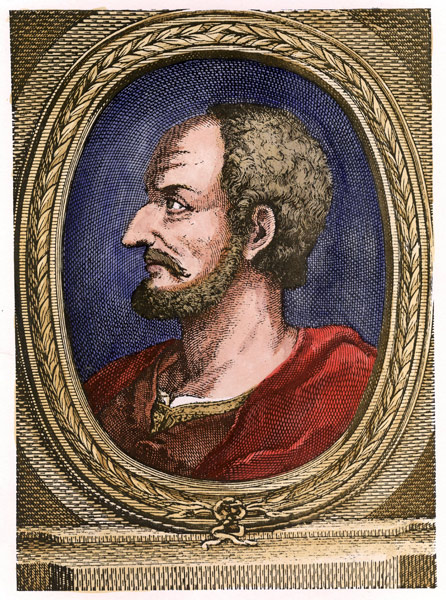
Cornelis Tacitus
You can download the book History by Tacitus by clicking the arrow below.
Osiris
In Ancient Egypt, the god Osiris was the protector of the dead, brother and husband of Isis, and father of the falcon-headed god Horus.
Tammoz
Tammoz is a Syro-Phoenician demi-god, his Greek equivalent Adonis is probably known better.
Marduk
Marduk is a Babylonian sun-god, the leader of a revolt against the old deities and institutor of a new order.
Vitzliputzli
Vitzliputzli, in other literary works also named Huitzilopochtli, is the Aztec god of war, to whom human sacrifices were offered.
A black knob shaped like a poodle's head
In Goethe's Faust, Mephistopheles first gets to Faust by taking the form of a black poodle.
A foreigner
Foreigners aroused both curiosity and suspicion in Soviet Russia, representing both the glamour of «abroad» and the possibility of espionage. Talking to strangers could get one into trouble with the secret police. Few foreigners visited the Soviet Union, and those who did were required to register with the authorities and to stay in special hotels, and they were observed very closely.
In Russian language a foreigner is indicated by the word иностранец [inostranyets], but in times past the word немец [nemets] was also used. This word had a double meaning, however. It stood, besides for foreigner, also for German. So when Ivan, in the first chapter of The Master and Margarita asks Woland «Вы немец?» [Vy nemets?], it can mean «are you German?» as well as «are you a foreigner?». Немец [nemets] would come from the verb неметь [nemet], which means to become dumb. A nemets is then a dumb, in the sense of someone who doesn't speak Russian.
You can read more about Russians and foreigners in our Context section of this website by clicking the arrow below.
The Phoenician Adonis
With the Phoenician Adonis Berlioz refers to the Syro-Phoenician equivalent of the Greek god Adonis: the demi-god Tammoz
The Phrygian Atris
The name Atris is probably a typing error in the English translation by Richard Pevear and Larissa Volokhonsky, since Bulgakov was writing about фригийский Аттис [Frigiyskiy Attis] or Phrygian Attis. Attis is a Phrygian god, companion to Cybele. He was castrated and bled to death.
The Persian Mithras
Mithras is the Greek name for the Persian Mithra, a god who is truth-speaking, with a thousand ears, with ten thousand eyes, high, with full knowledge, strong, sleepless, and ever awake. Mithra is also protector and keeper of all aspects of interpersonal relationships, such as friendship and love, and closely associated with the goddess Aredvi Sura Anahita, the hypostasis of knowledge.
The coming of the Magi
In the original Russian text is written приход волхвов [prikhod volkhvov]. It means the coming of the magicians. In Russian, the term священные волхвы [svyachennije volkhvy] or holy magicians is used to describe the Three Wise Men, the Three Kings, or the Kings from the east who visited the newborn Jesus according to Matthew 2:1-12 - «After Jesus was born in Bethlehem in Judea, during the time of King Herod, Magi from the east came to Jerusalem and asked, 'Where is the one who has been born king of the Jews? We saw his star when it rose and have come to worship him'.»
The Magi were members of the Persian priestly caste. In other bible translations the terms diviners or astrologers are also used.
If, not being your acquaintance, I allow myself...
The foreigner's introduction inspired Mick Jagger from the British band The Rolling Stones to write the song Sympaty For The Devil, one year after the novel was published for the first time. At that time, the British singer Marianne Faithfull was Jagger's girlfriend. In an interview with Sylvie Simmons from the magazine Mojo in 2005, she said: «I got Mick to read The Master And Margarita and out of that, after discussing it at length with me, he wrote that song».
The song starts with the words: «Please, allow me to introduce myself...». In 1968, the French director Jean-Luc Godard (°1930) released the film One Plus One, entirely devoted to the creation of the song Sympathy For The Devil.
Restless old Immanuel
Immanuel Kant (1724-1804), was a German idealist philosopher. In his Kritik der reinen Vernunft (1781) he wrote that, though we can not prove it, we can, by the pure reason - which is the ability to transcend the sensory reality and thus no longer depend on it - conclude that, among others, freedom, immorality and God exist.

Immanuel Kant
The five proofs that Kant «roundly demolished» according to Woland, and to which he added «a sixth of his own», are the so called Quinquae viae, which are five proofs of the existence of God, formulated by the catholic philosopher and theologian Thomas Aquinas (1225-1274) in his Summa Theologiae (1265-1274).
You can read more about these proofs in the annotations of Chapter 3.
Schiller
Friedrich Schiller (1759-1805) was a German poet and playwright and a liberal idealist. At the beginning, Schiller was a revolutionary in his work. Which, in those days, meant that he was striving for freedom and equality, and rejected arbitrariness and injustice. Later he became more moderate. Schiller is, among others, known for his poem An die Freude (1785) which was partly used by his contemporary Ludwig von Beethoven (1770-1827) in the final part of the Ninth Symphony. A well-known statement of Schiller concerned the work of Immanuel Kant related to freedom: «you can because you have to».
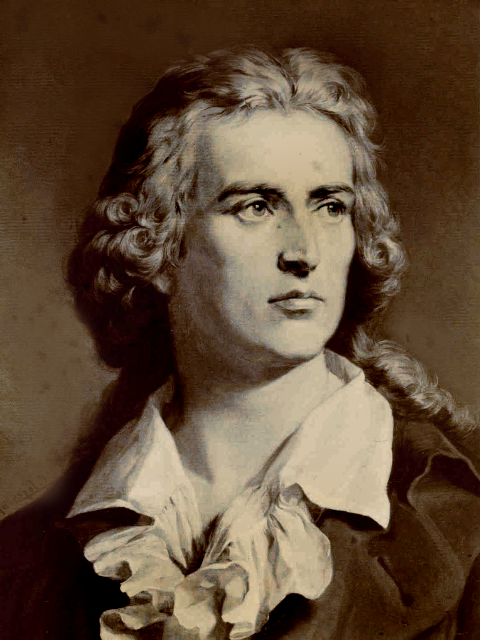
Friedrich Schiller
Schiller struck a productive, if complicated, friendship with the already famous and influential Johann Wolfgang Goethe (1749-1842), with whom he discussed much on issues concerning aesthetics, encouraging Goethe to finish works he left merely as sketches; this thereby gave way to a period now referred to as Weimar Classicism. They also worked together on Die Xenien (The Xenies), a collection of short but harshly satiric poems in which both Schiller and Goethe verbally attacked those persons they perceived to be enemies of their aesthetic agenda.
Strauss
The Strauss mentioned here is David Strauss (1808-1874), a German theologian, author of Das Leben Jesu, kritisch bearbeitet or The Life of Jesus Critically Examined. He didn't care of the reality of the Jesus character, but he gave a mythical interpretation of the New Testament in the context of the poetical consciousness of the Jewish and the early christian communities. To him, the person Jesus was a fiction resulting from cultural and literary expectations.

David Strauss
You can download the full text of Das Leben Jesu, kritisch bearbeitet in English from the Archives section of this website by clicking the arrow below.
Solovki
Solovki is a casual name for the Solovetski Islands in the White Sea. On the territory of a former convent was situated the Соловецкий лагерь особого назначения [Solovetsky lager osobogo naznacheniya] or the Solovetsky Special Purpose Camp, one of the earliest and most notorious concentration camps. The last prisoners were loaded on a barge and drowned in the White Sea in 1959.
The three years in Solovki could refer to an incident that occurred in 1926, two years before Bulgakov began to write The Master and Margarita. At that time, a number of Freemasons were arrested in Leningrad by the secret police OGPU, the forerunner of the NKVD. One of those arrested was the lawyer Boris Viktorovich Kirichenko (1883-1941?), who was known under the pseudonym Boris Viktorovich Astromov
Astromov said that he was already 2000 years old and that he was a follower of Kant. He was convicted because he had helped to organise an «international bourgeois conspiracy against the Soviet Union». He got sentenced to five years in a concentration camp, later replaced by a period of three years. In December 1926, he was pardoned and he was exiled to Siberia. In 1940, he was again arrested by the NKVD. After that, no one ever heard about him anymore.
The interest of Bulgakov for Freemasonry can be explained by the fact that, in 1903, Afanasy Ivanovich Bulgakov (1859-1907), theologian and church historian, and the father of Mikhail Afanasievich, had written an article about Modern Freemasonry in its Relationship with the Church and the State, which was published in the Acts of the Theological Academy of Kyiv. Bulgakov refers more than once to Freemasonry in the novel.
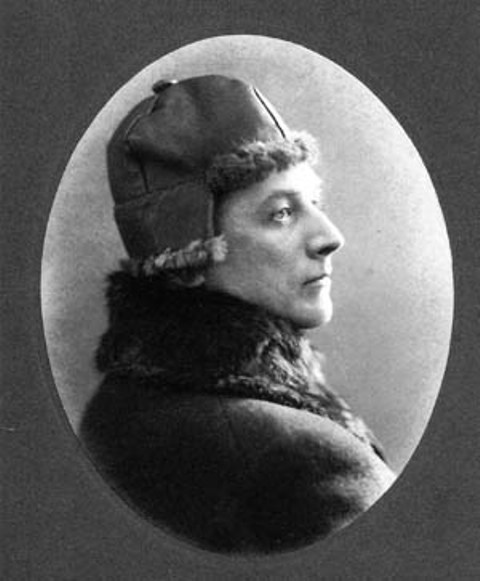
Boris Viktorovich Astromov
You can read more on Freemasonry in The Master and Margarita in the Context section of this website by clicking the arrow below.
Man governs it himself
Bezdomny quotes a verse from the poem Наше воскресенье [Nashe voskresenye] or Our resurrection, written by Vladimir Mayakovsky (1893-1930) in 1923: «нам не бог начертал бег […] миром правит сам человек» or «no god determines our flight [...] the world is governed by man himself ».
Motionless in a wooden box
The story which Woland describes so colourfully here, alleges Господин из Сан-Франциско [Gospodin iz San Frantsisko] or The Gentleman from San Francisco, a story from 1915 by Nobel Prize winner Ivan Bunin (1870-1953). Bunin himself said he got the idea of writing this story after having seen the cover of the novella Death in Venice by Thomas Mann (1875-1955) in a Moscow bookstore.
Bulgakov must have loved this story, since he also referred to it in his novel The White Guard, where «a cold cup of tea and The Gentleman from San Francisco lay on the table in front of Elena Turbin».
Our Brand
In the Russian text Ivan says that he smokes Наша Марка [Nasha Marka] or Our Brand. Nasha Marka, produced originally by V.I. Asmolov & Co in Rostov on Don, is a Russian brand of cigarettes. It still exists and is very popular - it celebrated its 100th anniversary in 2003. In 1920, the company was nationalized and the name changed to the Don State Tabacco Factory (DSTF). Production promptly decreased by 60 % compared to 1916. But the NEP gave a new impulse and in 1926 the production was four times the 1922 results. After the Soviet era, in 1992, the DSTF was reorganised and the name changed into JSC Donskoy Tabak. At the centenary celebration of Nasha Marka in 2003, a new industrial complex was built with a production capacity of 60 billion cigarettes per year. JSC Donskoy Tabak is now part of the agroholding AGROCOM.
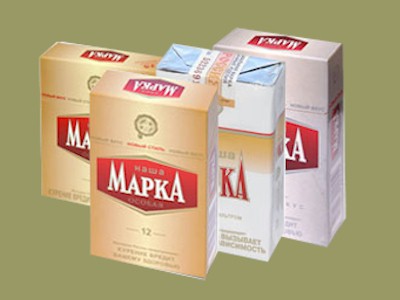
Nasha Marka
The way Woland offers a cigarette to Ivan reminds of a scene from Goethe's Faust. The devil Mephistopheles asks some tipplers in the Auerbachs Keller in Leipzig: «Nun sagt, was wünschet ihr zu schmecken?» or «Tell me, what do you wish to taste?», which is followed by the counter-question: «Wie meint Ihr das? Habt Ihr so mancherlei?» or «How do you mean? Have you got so much choice then?». Just like Ivan replied: «What, have you got several?» when Woland asks him which kind of cigarettes he prefers.
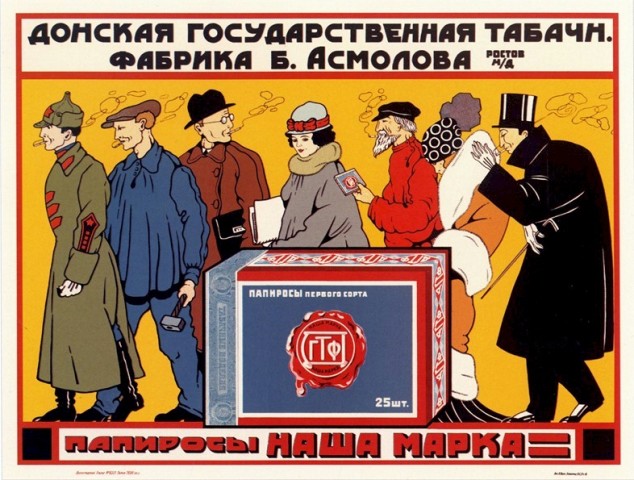
Advertisement for Nasha Marka (1925)
A cigarette case
The cigarette case of the stranger contains precisely Our Brand cigarettes - it is not so strange: the devil is traditionally gifted with the power to make any desired object appear. But Berlioz and Ivan are also astonished by the triangle which adorns the case. It is one of the emblems of the devil. It is often found in esotericism (jewish mystic, mystic of numbers, freemasonry). It is the reversible face par excellence, often linked to its reversed picture, as in the Seal of Solomon and the Star of David (David was the father of Solomon). This seal is formed by two twined triangles: the one - going up - representing the negative force or the devil, the other one - going down - representing the positive force or God. The equilibrium of both triangles is the key of Wisdom.

The Seal of Solomon
On the lid of the cigarette case «a diamond triangle flashed white and blue fire». Blue is the highest colour of Freemasonry. It symbolizes perfection, truth and immortality. A triangle with the so-called Eye of Providence is present in all temples of Masonic Lodges on the wall opposite to the entrance, symbolizing the East.
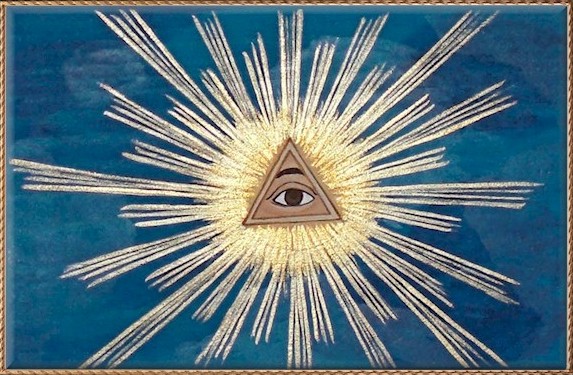
Triangle with the Eye of Providence
The interest of Bulgakov for Freemasonry can be explained by the fact that, in 1903, Afanasy Ivanovich Bulgakov (1859-1907), theologian and church historian, and the father of Mikhail Afanasievich, had written an article about Modern Freemasonry in its Relationship with the Church and the State, which was published in the Acts of the Theological Academy of Kyiv. Bulgakov refers more than once to Freemasonry in the novel.
You can read more on Freemasonry in The Master and Margarita in the Context section of this website by clicking the arrow below.
Mercury and the Moon
The term retrograde comes from the Latin word retrogradus or step backwards. For astrologers, the planets or the moon are «retrograde» when, seen from Earth, they no longer seem to follow their normal orbit around the sun, but appear to be stationary, or even moving in the opposite direction. In reality, it’s only an optical illusion, because those planets don't actually turn the other way around, it just looks that way. For the planet Mercury, this phenomenon occurs about three times a year, each time for three weeks.
Astrologers and spiritually inclined people often warn about periods of full moon and periods when a planet goes retrograde. In such a period some people, depending on the time and place of their birth, may expect great disaster in the domains symbolised by the planet concerned.
Mercury is a symbol for trade, communication, travel and transport, and therefore also for trams. So it should come as no surprise that Berlioz could expect a tragic encounter with the tram.
Whoever has Mercury in the second house deals with money wisely and professionally, and always thinks of methods to increase his or her income or property. He or she becomes nervous about his or her income position during afflictions or difficult transits.
For those who like to believe in it: on October 4, 2021, the communication network Facebook and its affiliates Messenger, WhatsApp and Instagram shut down completely, with the result that 3.5 billion people worldwide could not use these platforms. The next day we could read «Mercury retrograde» as an explanation on various platforms, because that planet, symbol of communication, was indeed retrograde from September 27 to October 18, 2021.
Enemies? Interventionists?
There was constant talk in the early Soviet period of enemies of the revolution and foreign interventionists seeking to subvert the new workers' state.
Komsomol
Komsomol is the contraction of the Коммунистический союз молодёжи [Kommunistichesky Soyuz Molodyozhy] or Union of Communist Youth, which all «good Soviet» young people were expected to join.
Komsomol had little direct influence on the Communist Party but played an important role as a mechanism for teaching the values of the communist party to the young, and as an organ for introducing the young to the political arena. The driver woman of the tram that wll decapitate Berlioz, is a member of Komsomol. We know that because she has got a «crimson armband». Well... in Chapter 3, we will see that it should have been a «scarlet scarf» or a «necktie».
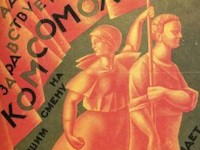
Komsomol propaganda
The growing up Soviet citizen had to follow a complete ideological itinerary, starting with the Всесоюзная пионерская организация [Vsesoyuznaya pionyerskaya organizatsya] or Pioneers. At the age of 14, the youngster moved to the Komsomol, where he or she stayed until the age of 28. After that, the talented members could join the Communist Party, which was a condition for having access to more important functions. The Komsomol served as a repository for young potentials and a steppingstone for any career. Being thrown out of the youth movement, for instance because of misbehaviour at school, or because of politically incorrect ideas, was considered as one of the major punishments and after that, further career opportunities within the Soviet Union were reduced to zero.
Annushka
Annushka is one of the few real life persons wo kept her actual name in The Master and Margarita. Tatiana Nikolaevna Lappa (1892-1982), Bulgakov's first wife remembered Annushka Goryacheva (1871-?), who lived in the same apartment no. 50. The apartment was a sort of working-class dormitory with 7 rooms off a central corridor. Annushka Goryacheva had a son and beat him often. They used to buy home-brew vodka, get drunk, fight, and make noise.
In an earlier version of the novel, her name was Pelageyushka, in another one she was called Annushka Basina. She also played a role in No. 13 - The House of the Elpit Workers' Commune, a short story from 1922, and in Theatrical novel, also known as Black Snow, a novel from 1937.
Boulgakov could get terribely annoyed by the real Annouchka, as we can conclude from the fact that he wrote in his diary on October 29, 1923: «The first day of heating was marked by the fact that the famous Annushka left the window of the big kitchen opened during all night. I resolutely do not know what to do with the scoundrel who lives in this flat».
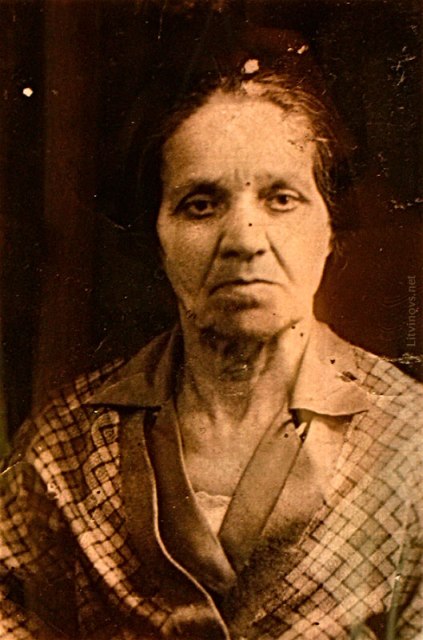
Annushka Goryacheva
You can read more on Annushka Goryacheva by clicking the arrow hereunder.
A Russian emigre
Many Russians who were opposed to the revolution emigrated abroad, forming important «colonies» in various capitals like Berlin, Paris, Prague, Harbin or Shanghai - where they remained potential spies and interventionists.
Gerbert of Aurillac
Gerbert of Aurillac (946-1003) was a theologian and mathematician, popularly taken to be a magician and alchemist. He became pope in 999 under the name of Sylvester II.
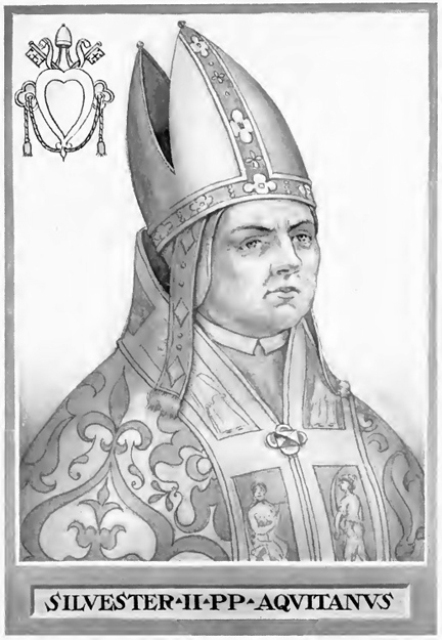
Pope Sylvester II
Nisan
Nisan is, according to the civil calendar, the seventh month of the Jewish lunar calendar. Originally, according to the ecclesiastical calendar, it was the first month. The fifteenth day of Nisan (beginning at sundown on the fourteenth) is the start of the feast of Pesach or Passover, (Hebrew: פסח - coming from passing over or Pasach). It's the day of the full moon, because the jewish months start on the day following the new lunar crescent. Passover is also known as Pesach, the spring feast, or freedom feast, commemorating the exodus of the Jews from Egypt.

All films based on The Master and Margarita have been subtitled by your webmaster in English, French, Dutch, German, Spanish and Italian. Click on the images below to find them.
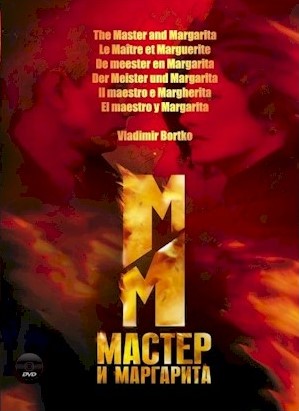 |
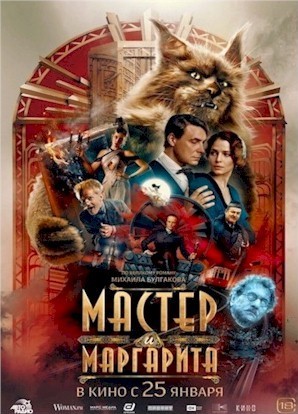 |
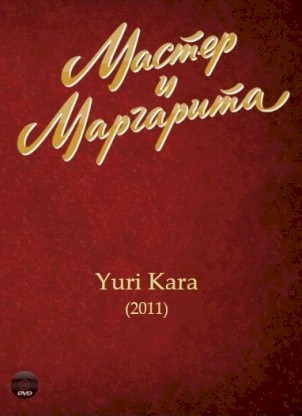 |
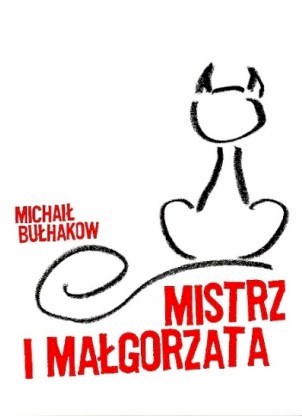 |
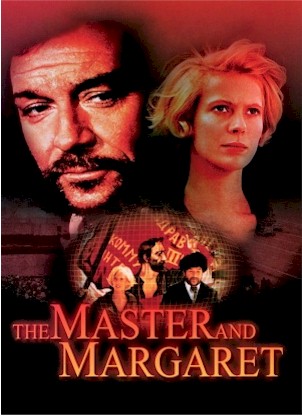 |
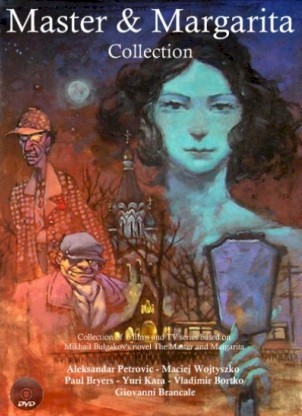 |






